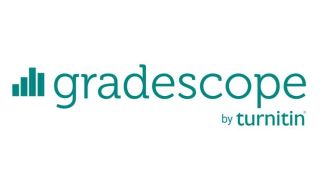Gradescope, as the name suggests, is a digital tool for grading. The idea is to make submissions, grading, and assessing all easier.
As such, this uses an app and online-based platform to provide educators with everything they need to access, all in one place, by creating a single point for work submissions, grading, and analysis. Being digital and cloud-based allows access from wherever, whenever.
Beyond the digital packaging, this also offers a more simplistic way of marking, thanks to multiple choice bubble-style options, which should help to save time on the process of marking, too.
But with lots of other software options out there, many of which already integrate with current digital tools, is this one going to help you?
What is Gradescope?
Gradescope is a digital tool that creates a space for students to submit work, for educators to mark it, and for both to be able to see the final grade given. All of which is accessible from nearly any device with the easy-to-use app and online-based platform.

This is not only digital though, as it also allows teachers and students the ability to work on paper, which can then be scanned into the system for easier access in the future.
Gradescope works across a host of submission types, including assignments, exams, and even coding. All of which can be marked quickly but also commented upon so students have feedback directly available.
Using rubrics and questions-based analysis, it's possible for teachers to get a very clear view of the grades for individuals as well as across the class groups.
How does Gradescope work?
Gradescope can be purchased after a free trial, which then allows teachers to gain access with students submitting work via the app or website using their own devices.

Usefully, students can take a photo of their work using their smartphones and have that converted to PDF for uploading into the app. The conversion part can be done with lots of free apps but Gradescope does recommend a few that do the best job.
Once uploaded, the app can intelligently detect a student's hand-written name and determine where the work begins and ends. It's then possible to grade on a question-by-question basis, since the submissions can be anonymized for truly bias free grading.
Educators can then provide feedback and grade, using a flexible rubric, before sending the result to a student or exporting it all to a gradebook that may already be in use. It is then possible to get detailed analysis for work over time, per student, per group, per question, and more.
What are the best Gradescope features?
Gradescope supports bubble sheets, which makes for some of the quickest and easiest grading. Simply create a question and answer bubble sheet, in which students mark off the letter of multiple choice options as they go. This can then be scanned in using the app, and will automatically be recognized and graded where teachers can then confirm the mark is accurate, before exporting and analyzing.
Thanks to AI smarts it is possible to group similar answers to make for even faster grading. For example, one chemistry teacher commented that she was able to grade 250 students answering 10 multiple choice questions in just 15 minutes. You can even use the one-click response option to send auto-graded responses to students right away.

For coding this is a really helpful grading system as it automatically recognizes code and can even auto-grade based on whatever is uploaded. This can be done from the likes of Github and Bitbucket, and also allows teachers to manually input grading and feedback as needed.
The fact this scanning-based marking system also works for exams can make submitting and marking an easier process. Everything also is digitized for easy access in the future and for analysis as well as clear overviews of trends that might be missed otherwise.
How much does Gradescope cost?
Gradescope does offer a free trial but then the paid versions fall into three levels, each of which are priced based on your institution's size and needs.
The Basic plan gets you collaborative grading, unlimited course staff, student mobile app, assignment stats, regrade requests, full grade export, and late submissions.
The Complete plan gets you all that plus import rubrics, text annotations, AI-powered grading, anonymous grading, programming assignments, code similarity, bubble sheet assignments, unpublish course grades, and rubrics before submission.
The Institutional plan gets you that lot plus duplicate a course, LMS integration, Single Sign On (SSO), administrator dashboard, and dedicated onboarding and training.
Gradescope best tips and tricks
Bubble out
Use the bubble sheet option to speed up the marking process. This helps students learn how to work with bubble sheets while freeing up more time for you to plan.
Feedback
Use AI grading to see how well student work is recognized. For those students whose efforts the system struggles to recognize, look at improving handwriting to better prepare them for exams.
Annotate
Use text annotation to help students see where they could have done something different as well as providing positive feedback to encourage them within the platform.

